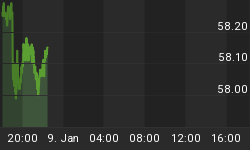Why read: To think about whether a 2.5% change in a company's borrowing rates ought to materially affect a company's competitive position. Certainly that could be the 'takeaway' from a recent article.
Commentary: Assume a manufacturing company:
- that has what one might conventionally consider an 'optimal' or 'reasonably balanced' debt:equity ratio of 40% debt and 60% equity;
- whose borrowing cost averages in 'normal times' 5%, and averages 7.5% in 'abnormal times';
- with revenues on product sales of $10 million;
- with gross margins, in 'normal times', of 30%
- with overheads in 'normal times', including depreciation, of 20% of revenues; and,
- a capital structure comprised of interest bearing debt of $2 million and equity of $3 million (40%/60%).
The following table shows the effect of an interest rate increase of 2.5% on that hypothetical company's profitability.
| Normal Times | Abnormal Times - interest rate change only | Abnormal Times with 20% revenue decline but same cost structure | |
| Revenue | 10.0 | 10.0 | 8.0 |
| Gross margin (30%) | 3.0 | 3.0 | 2.4 |
| Overheads | 2.0 | 2.0 | 1.6 |
| Pre-tax, pre-interest earnings | 1.0 | 1.0 | 0.8 |
| Interest expense on $2.0 million debt | |||
| @5% (normal times) | 0.1 | ||
| @7.5% (abnormal times) | 0.15 | 0.15 | |
| Pre-tax profit | 0.9 | 0.85 | 0.65 |
In essence, for an optimally financed company that does not suffer in 'abnormal times' from a decline in revenue, but experiences a 50% increase in its interest rates, that company should be able to 'weather the interest rate storm' without much difficulty. However, superimpose:
- revenue declines;
- gross margin declines and overhead cost % increases as a function of revenues;
- perhaps most importantly, an over-levered financial position - that is a balance sheet that has far more debt than it has equity,
and the company's circumstances can change in a radical negative way very quickly. For example, if our hypothetical company saw its sales decline by 20% and it had a capital structure of 20% equity and 80% debt (in the example, $1 million equity and $4 million debt) the results, as set out in the following table, would be quite different.
| Normal Times | Abnormal Times with 20% revenue under revised scenario | |
| Revenue | 10.0 | 8.0 |
| Gross margin (30% dropping to 25%) | 3.0 | 2.0 |
| Overheads (20% increasing to 25%) | 2.0 | 2.0 |
| Pre-tax, pre-interest earnings | 1.0 | 0.0 |
| Interest expense on $2.0 million debt | ||
| @5% (normal times) | 0.2 | |
| @7.5% (abnormal times) | 0.3 | |
| Pre-tax profit | 0.8 | (0.3) |
In essence, a suggestion that Italian (or any other country's) companies competitiveness is materially impacted by a 2.5% increase in interest rates may be quite correct (the referenced article at one point suggested Italian interest rates have increased by 2%). However, this typically would only be the case where a company either suffered a drop in revenue, a drop in gross margins, an increase in operating costs, or a combination of those things in circumstances where it had over-levered its balance sheet in good (or better) economic times.
Like individuals and countries, companies are vulnerable when they carry too much debt against their equity positions.
Topical Reference: Analysis: Crisis stifles Italian firms' competitiveness drive, from Reuters, Lisa Jucca, August 5, 2012 - reading time 4 minutes, thinking time longer.
















